Thyme Plants: Ornamental and Edible Herbs
Updated: Apr. 21, 2023
A thyme plant isn't just a fragrant and edible herb. It is a versatile plant that adds beauty in many areas of the landscape.
Add Versatile Thyme Plants to Your Garden
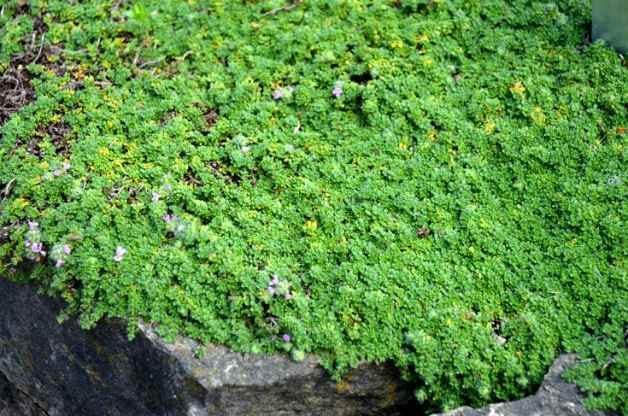
If you look in the pantry of any kitchen, you will probably find a container filled with this aromatic herb. A thyme plant (Thymus spp. Zones 4 to 9) is often used to flavor soups, gravy, meat and vegetable dishes. I like to use thyme to make herb butter. It also tastes great with fish and in lemon-flavored foods such as flavored iced tea or even cookies.
While thyme is a popular kitchen herb, did you know that thyme is also highly prized as an ornamental plant in the garden? Here’s what you need to know about growing a thyme plant.
Follow these tips to grow your best basil ever.
Are Thyme Plants Annuals or Perennials?
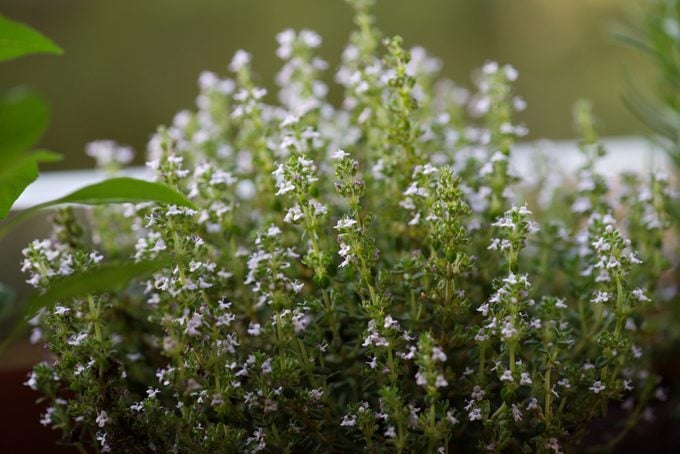
Thyme is a fragrant, low-growing ground cover that produces tiny pink, purple or white flowers, depending on the variety. Most thymes are perennial, winter hardy to zones 4 or 5.
In warmer climates, grow thyme as a perennial and harvest throughout the entire year. For gardeners in cooler climates, grow thyme as an annual. Its flowers add beauty to the garden in spring and summer. Thyme plants also serve as a pollinator plant for bees.
Learn how to grow a container garden for herbs.
Thyme Care and Growing Tips
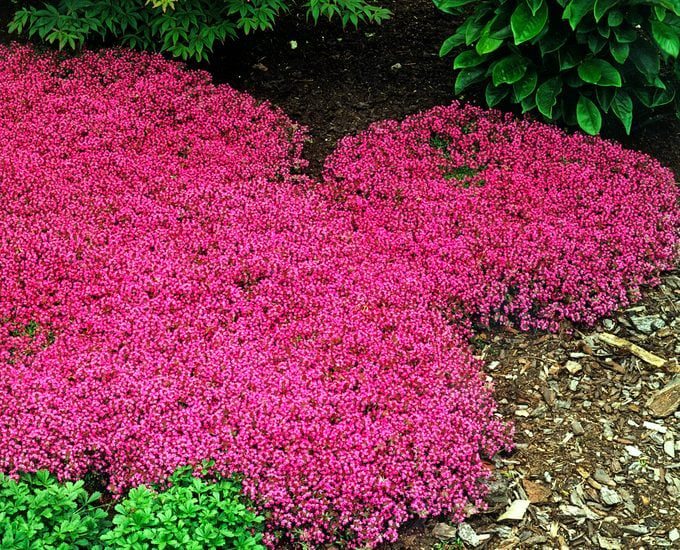
These plants grow well in sun and part shade, with low water requirements. They dislike soggy roots or root crowns, so plant them in locations with well-draining soil. Unlike some herbs that grow easily from seed, thyme does best when planted from transplants in spring once the danger of frost has passed.
Regular pruning of thyme is important. Otherwise it can become woody, producing few leaves and becoming unattractive. Begin pruning in spring and repeat in summer as needed. A good guideline is to remove 1/3 or less of the thyme plant each time. Finish pruning at least a month before the first frost or new growth can become severely damaged when cold temperatures hit.
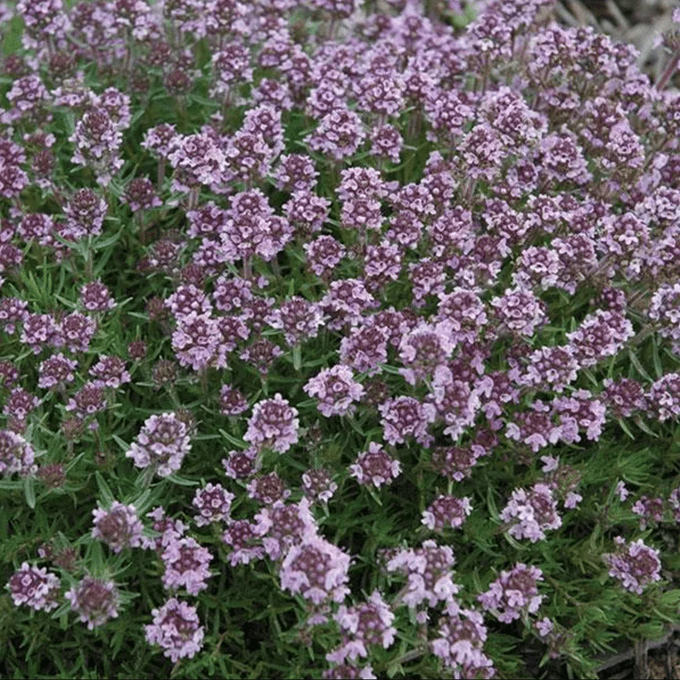
Some lesser-known varieties include the fragrant Spicy Orange, Elfin, which grows in dense clumps, and Archer’s Gold, with beautiful saffron foliage in winter.
Upright thymes can reach 10 inches. Creeping thymes range from almost flat to 2 to 3 inches high and typically spread as ground cover.
Where to Plant Thyme
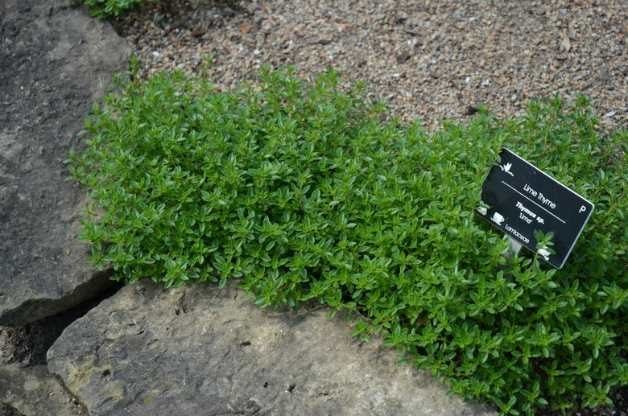
Thyme is quite a versatile plant in the garden. This herb can grow between bricks or stepping-stones, draping down over walls, in a rock garden or as a border plant. All varieties are fragrant and edible.
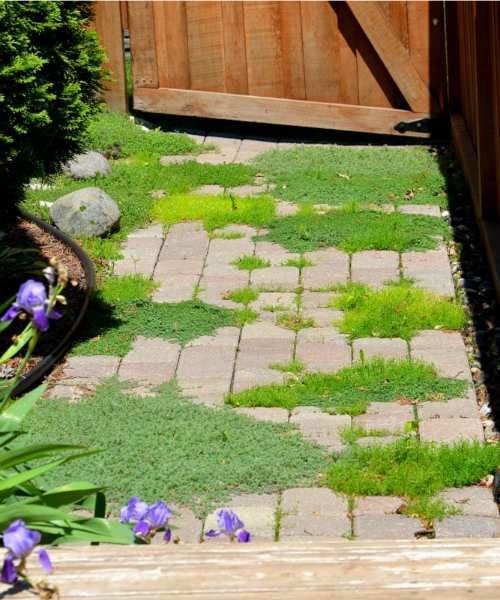
When planted along a walkway, thyme releases its aromatic fragrance when you walk on it. Creeping thyme tolerates light foot traffic—making it perfect along a stony path. It’s best used in an area such as a side yard that doesn’t get too much use. The area between rocks and along pathways is a tricky spot to grow anything (other than weeds!), but ground covers such as thyme thrive in these cramped areas.
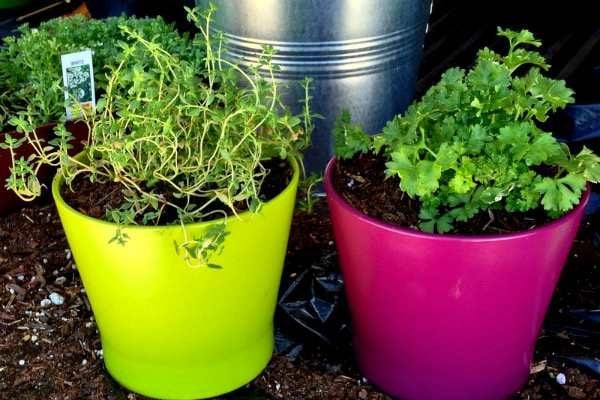
If your garden is too cold for thyme to survive in winter, then plant it indoors. Thyme is one of many herbs that does very well when grown in front of a sunny, south-facing window. Use a good quality potting mix and add a slow-release fertilizer every 3 months for best results. I planted the thyme plant above in September. It lasted throughout the winter and spring growing on my windowsill.
Learn how to grow a drought-tolerant rosemary shrub.
When to Harvest Thyme
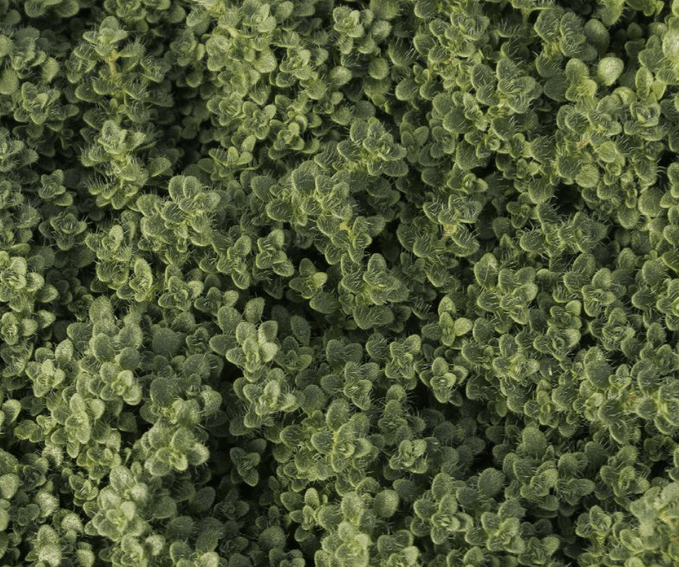
Harvest thyme throughout the year in mild climates and in spring and summer in cooler zones. Like most herbs, the flavor is most intense just before flowering. Although the leaves will still taste delicious even if harvested when flowering.
Strip leaves from the stems and add them to your favorite dish. Thyme can also be easily preserved by drying or freezing into ice cubes.
Next, get tips for growing lavender plants in your garden.



















